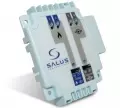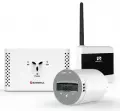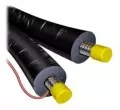Heat exchanger
Heat exchangers are an important part of many systems and processes that require the transfer of heat from one medium to another. These devices are used for efficient heat transfer between hot and cold media. Here are some important facts about heat exchangers:
Function of heat exchangers: Heat exchangers have the task of enabling the transfer of heat between two different media, be it liquids, gases or even solids. Heat exchangers provide heat transfer either by direct contact between the media (for example, in heat exchange between liquid and gas) or through a partition wall (for example, in heat exchange between liquid and gas separated by a copper wall).
Types of heat exchangers: There are several types of heat exchangers, including tube, plate, shell and direct heat exchangers. Tube heat exchangers are the most common and consist of tubes with one medium passing through them while the other medium circulates around these tubes. Plate exchangers have overlapping plates that create channels for both media. Shell exchangers have one shell through which one medium passes while the other medium circulates around the shell. Direct heat exchangers use direct contact between two media to exchange heat.
Heat Exchanger Applications: Heat exchangers are used in a variety of applications, including heating and cooling in buildings, food processing, chemical and petrochemical processes, energy and many other industries. They are necessary for efficient use of heat and reduction of energy losses.
Efficiency and maintenance: The efficiency of heat exchangers is a key factor in their design and operation. Proper sizing, design, and proper maintenance of a heat exchanger can ensure optimal heat transfer and minimize losses. Regular maintenance, such as cleaning, removing deposits and repairing seals, is important to maintain the performance of heat exchangers.






















































































































































